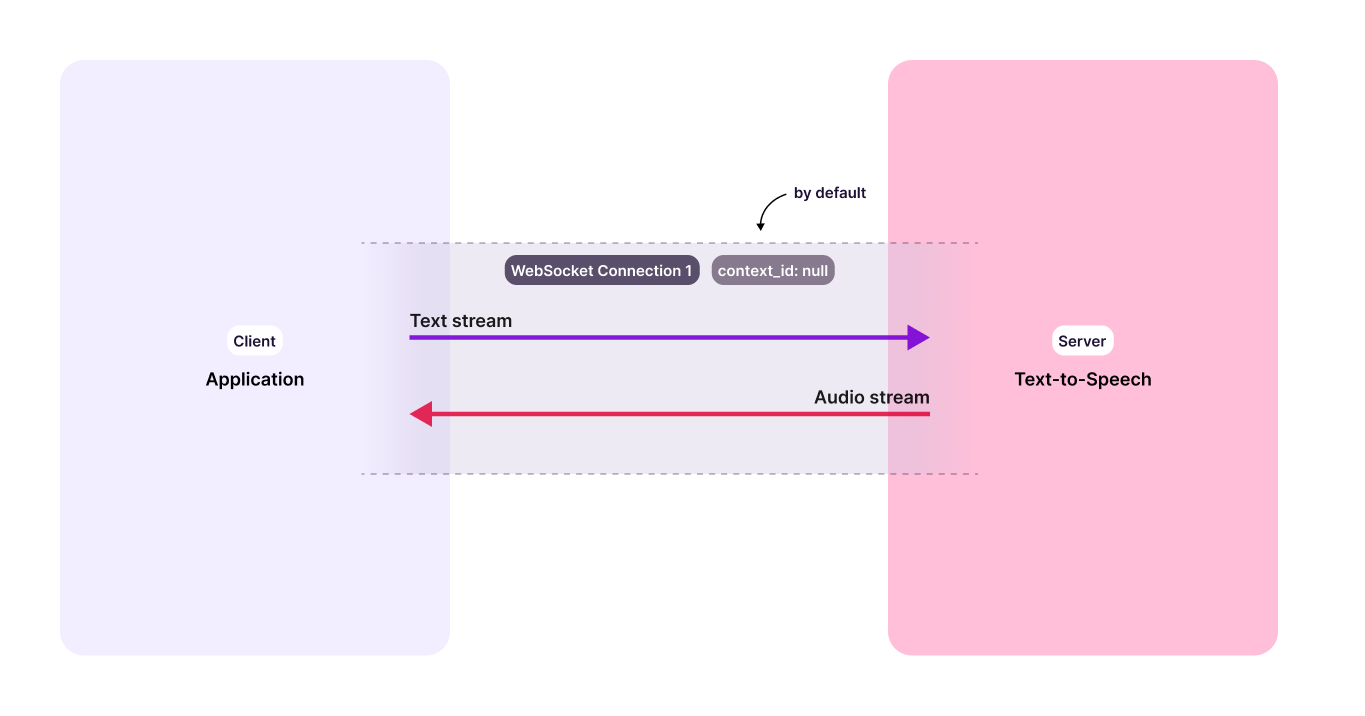Context ID
Murf’s WebSocket implementation is based on the concept of a Context ID — a unique identifier used to track a specific TTS request. Context ID ensures continuity in the conversation, especially when the input text is generated in real time (e.g., via an LLM), comes in parts, or when the interaction is interrupted. It serves as a proxy for a single turn in the interaction between a user and the agent.
Why Use a Context ID?
- Maintains Conversational Flow: Links input and output across split or partial messages.
- Handles Interruptions Gracefully: If a user interrupts the agent, the Context ID ensures that the current request can be cancelled or skipped.
- Supports Multi-Turn Interactions: Essential for structured flows like bookings, troubleshooting, or guided forms.
- Simplifies Handoff and Debugging: If support is needed, the Context ID allows you to trace exactly what happened in a specific interaction turn.


Working with Context IDs
Input Stream
- Assign a new
context_idfor each turn in the conversation. - The
endparameter should be set totrueat the end of each turn. This clears the context and allows the next turn to start. - Ensure input text includes proper punctuation for better prosody and consistent audio output.
Output Audio
- The response will include the same
context_id, allowing you to match responses with their corresponding inputs. - A
finalflag will indicate that all audio for that context has been sent. - Output is streamed in the same order that input text was received.
Handling Interruptions
- If the user interrupts the agent mid-response, start a new
context_idfor the next turn. - Murf’s WebSocket supports multiplexing, so multiple
context_ids can run independently over the same connection. - To cancel a pending or in-progress turn, use the
clearparameter. If synthesis hasn’t started, the request is cancelled. If synthesis has started, the audio will still play to completion.
Example for using Context ID in a Voice Agent
Let’s say you’re building a voice agent that helps users book flights.
Establish WebSocket Connection
You open a WebSocket connection when the conversation starts. This connection stays open and allows real-time audio streaming between user and agent.
Use a Context ID for Each Agent Response (Turn)
Turn 1
User says: “I want to book a flight to Paris.”
Your backend processes this and generates an agent response:
Agent text: “Sure, when would you like to travel?”
You send this text to Murf’s WebSocket API:
Murf returns audio with context_id: “turn_1” so you can play it back to the user.
Turn 2
User says: “Next Friday.”
Agent response: “Got it. Do you prefer morning or evening flights?”
You send this text to Murf’s WebSocket API:
Murf returns audio tagged with context_id: “turn_2”.
Handle Interruptions
If the agent is mid-response and the user interrupts (e.g., says “Wait, make that Saturday”):
- Stop playback of the current audio. The
clear: trueflag cancels any pending or incomplete responses tied to earlier contexts. - Send the updated agent reply with a new
context_id:
Murf returns audio tagged with context_id: “turn_3”.
Why This Matters
- Each context ID represents one agent turn in conversation.
- You maintain clean tracking of each response, even with interruptions.
- WebSocket handles all turns over a single connection, supporting real-time, fluid interaction.